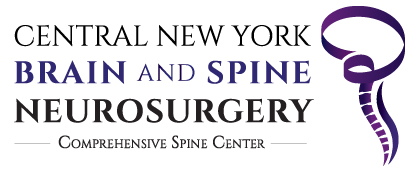Back pain is one of the most common health complaints worldwide. About 80% of Americans will experience this problem at some point in their lives. The causes of back pain range from bad posture and injuries to lifelong diseases, such as arthritis. Spinal stenosis, a degenerative condition that affects anywhere between 250,000 and 500,000 Americans, may cause pain in the back too.Although this disorder is more common in those over 50 years old, it can occur at any age. Generally, younger people experience few or no symptoms.But what is spinal stenosis and how does it affect your health? Most importantly, what can you do about it? Let’s find out!
Understanding Spinal Stenosis
The spine not only allows your body to stand and bend but also protects your spinal cord. As you age, the spinal canal can narrow, compressing the nerves that travel through it. This process may occur in the cervical, central, or lower part of the back.Spinal stenosis typically affects the lumbar area. Cervical stenosis is less common but more dangerous as it can lead to severe disability and death. Their symptoms occur gradually and may range from mild to debilitating.Most times, this condition results from the structural changes in the spine due to osteoarthritis. The spaces in your spine may also narrow after a trauma, like a car accident or sports injuries. Other potential causes include:
- Congenital factors
- Compression fractures of the spine
- Degenerative disc disease
- Herniated discs
- Bone spurs
- Tumors
- Instability of the spine
- Enlargement of facet joints
Athletes are more likely to develop spinal stenosis due to their increased risk of spinal trauma. Young people with scoliosis or a narrow spinal canal are at risk too.
Spinal Stenosis Symptoms
This condition occurs gradually over several years. Most individuals have no symptoms in its early stages. When they do occur, they tend to worsen and can affect your quality of life.Spinal stenosis symptoms vary from one person to another and depend largely on where the narrowing takes place. Lumbar spinal stenosis, the most common form of this disorder, may cause:
- Lower back pain
- Heaviness in the legs
- Tingling and numbness in the legs
- Weakness in the thighs or buttocks
- Discomfort when standing or walking
In general, these symptoms may improve when you’re leaning forward or sitting. Bending backward or standing reduces the space in your spinal cord, which can worsen the pain.Cervical stenosis, on the other hand, may cause pain and weakness in your arms or hands, neck, or shoulders. You may also experience balance and coordination problems, numbness, or stiffness in the neck, arms, or hands.If left unaddressed, both types of spinal stenosis may cause disability, bowel or bladder incontinence, and paralysis. Over time, your symptoms may become constant and lead to nerve damage.Cauda equina syndrome, a complication of lumbar stenosis, causes severe lower back pain, loss of bowel or bladder control, urinary retention, and sensory loss. This condition requires emergency surgery.
How Is Spinal Stenosis Diagnosed?
If you experience any symptoms of spinal stenosis, your doctor will perform a physical examination. He may also order imaging tests to confirm the diagnosis and rule out other disorders with similar symptoms. X-rays, MRI, and CT scans are the most widely used diagnostic methods.In some cases, a CT myelogram may be necessary. This imaging test uses a contrast dye and X-rays to detect narrowing of the spinal canal.
Know Your Treatment Options
Depending on your symptoms, you may benefit from spine surgery or less invasive options like physiotherapy, medications, or steroid injections. If you’re obese or overweight, consider losing a few pounds to reduce pressure on your spine.Many patients with spinal stenosis are able to manage their symptoms with regular exercise, physical therapy, and painkillers. Medications for nerve pain and non-steroidal anti-inflammatory drugs may help too.Surgery is only recommended in severe cases. In one study, about 60% of those who got surgery experienced improvements in their symptoms compared to 30% of those using conservative treatments.Several types of surgery exist, including posterior cervical decompression and fusion, cervical laminectomy, artificial disc insertion, and more. Your doctor is the only one who can determine which procedure is best for your needs.Like all surgical interventions, spinal stenosis surgery has its risks. These may include blood clots, infections, incontinence, or nerve injury. Sometimes, pain may worsen and become chronic after surgery.These risks are typically more common in older patients. The best thing you can do is to talk with an experienced surgeon and research your options thoroughly before making a decision. Don’t hesitate to ask for a second or third opinion if necessary.For most patients, it’s worth trying nonsurgical treatments for several months before going under the knife. Surgery is usually recommended if:
- You have difficulty walking and moving around
- You experience loss of bowel or bladder control
- You’ve tried other treatments, but your symptoms persist
At Central New York Brain & Spine Neurosurgery, we perform minimally invasive surgery for spinal stenosis. Our approach helps reduce the risks involved and ensures faster recovery.We also specialize in stem cell therapy, regenerative therapy, and other non-surgical options that may help relieve your pain and restore degenerative discs.
Restore Your Flexibility and Range of Motion
Living with spinal stenosis can be challenging. You may find it difficult to walk, sleep, or simply move around. But it doesn’t have to be this way.From staying physically active to maintaining a healthy weight, there are ways to manage this condition. Learn as much as you can about it, work closely with your doctor, and avoid activities that worsen your symptoms.Still wondering What is spinal stenosis? Perhaps you want to know more about your treatment options? Contact our team at Central New York Brain & Spine Neurosurgery to see how we can help!

